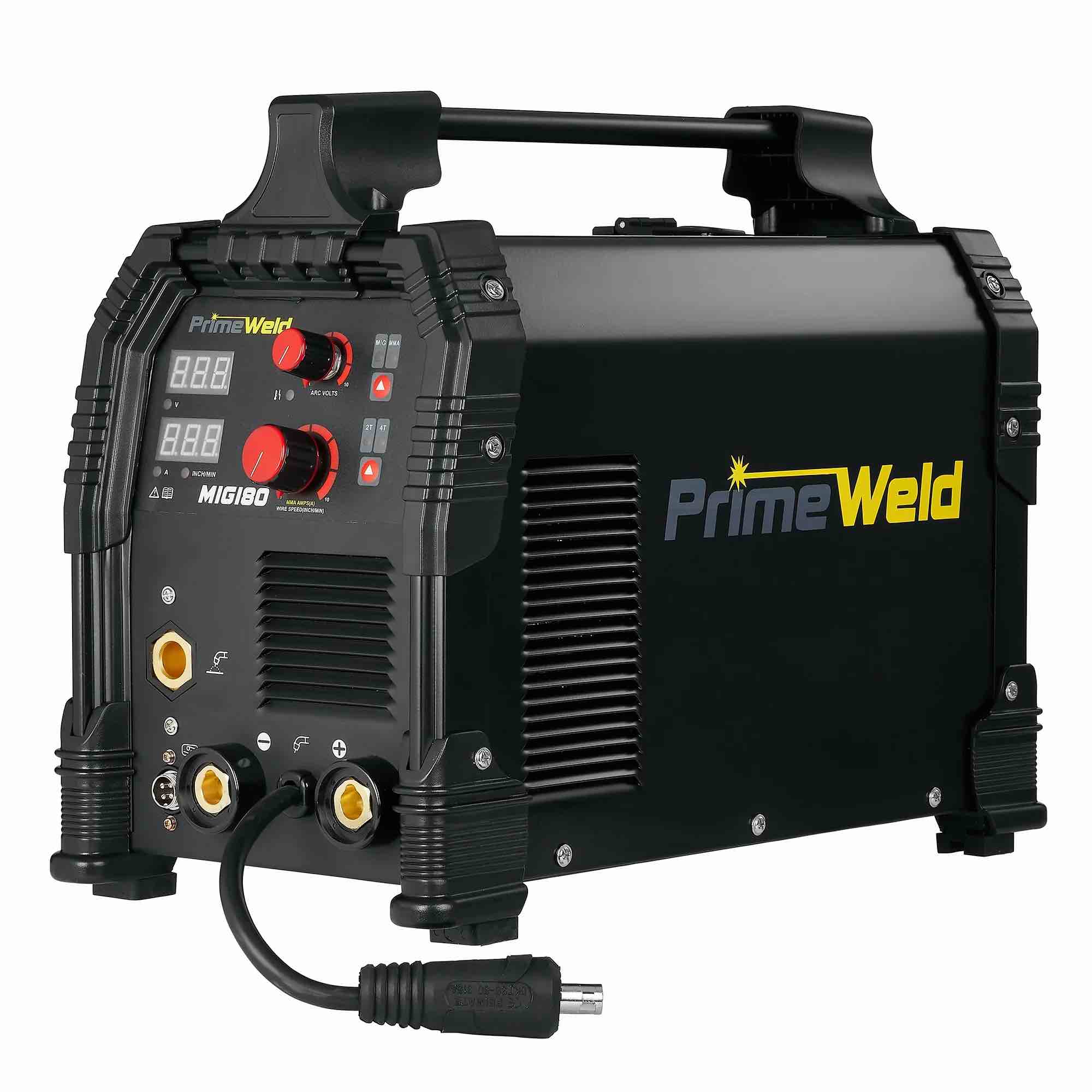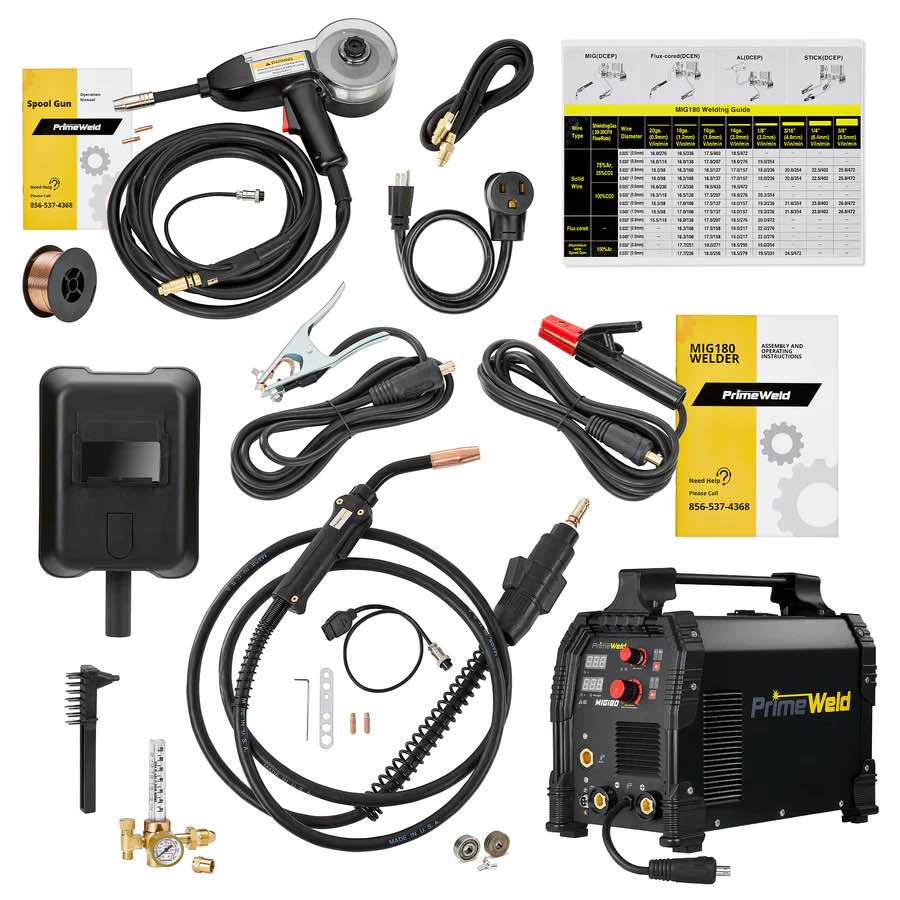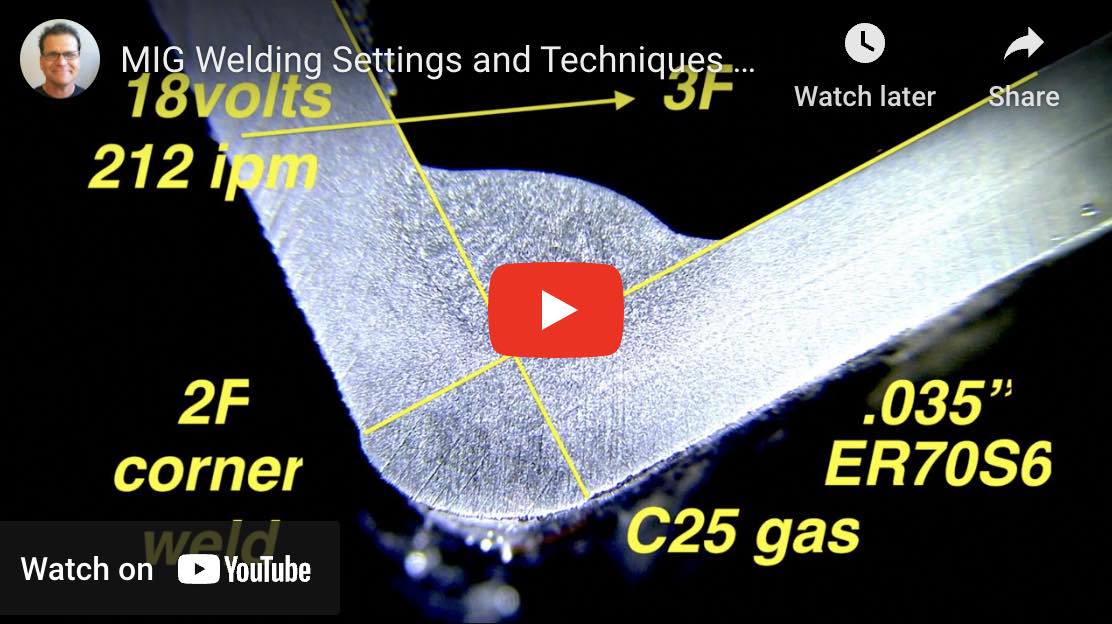PrimeWeld MIG 180
In this video, I tested the PrimeWeld MIG180 recommended settings for 11ga steel and then also tried those same settings on 1/4" thick carbon steel.
I used the pigtail adapter and plugged into my garage 115volt wall plug and I was so impressed that I immediately added this welder to my store at weldmonger.com
I think of my Mig180 mostly as a Great Little MIG Welder with a great arc and nice small mig gun that feels great in my hand... but it also Stick welds, and even comes with a spool gun for aluminum.
just look at all that comes with it... That is a lot of bang for the buck!
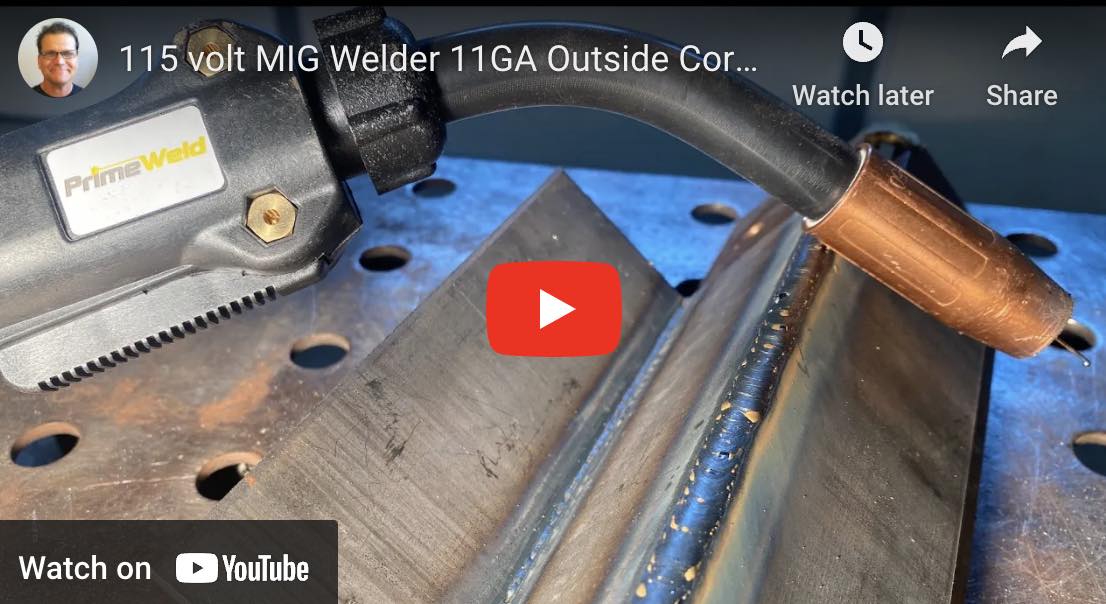
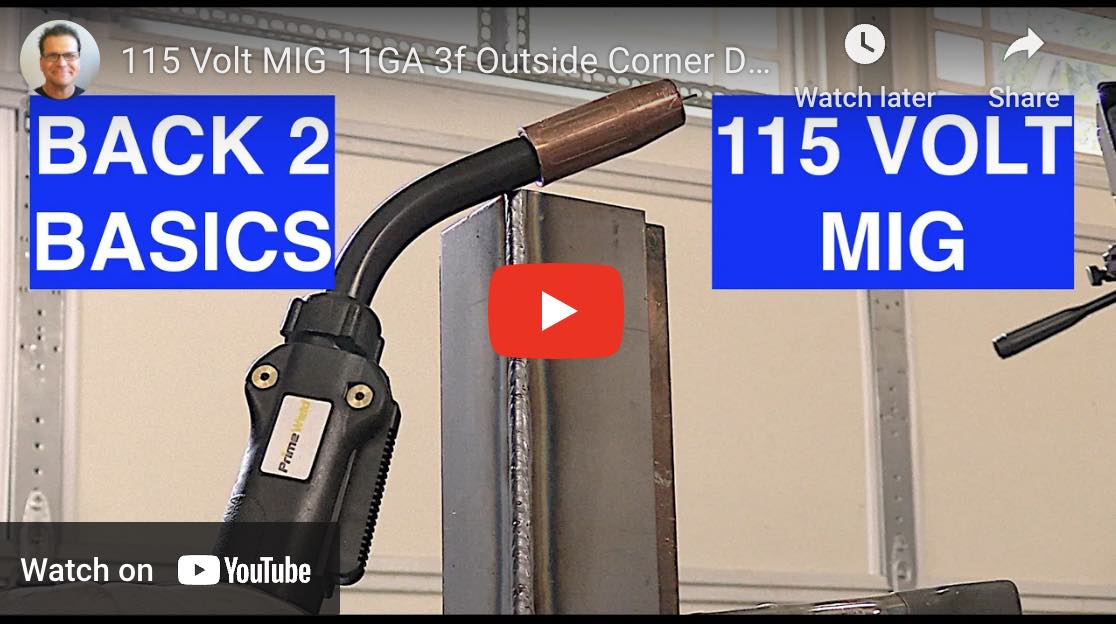
This is a great little Affordable Mig welder that is also a Stick welder.
Click the pic and check out what you get for a great price.
learn more about the MIG 180 at weldmonger.com
8 Keys to good mig welds using the primeweld mig 180 or any other mig welding machine
- Right settings (polarity, voltage, wire speed,) recommended settings on chart were good for flat and horizontal fillet welds but for vertical uphill welding, I select the settings for 1 or 2 thickness lower and also reduce wire speed by 10-15%
- Right hardware (right contact tip, nozzle, wire type and size) .023" wire is great for thin metal like auto body panels but .035" er70s6 works better for thicker metal. .030" is a good all purpose size if you weld thin and thick metal.
- Good ground - clamp to clean bright metal, not mill scale
- Right gas and right gas flow - C25 -75/25-ar/co2 small nozzles only require 20-25cfh but larger nozzles can require upwards of 35 cfh
- Good technique - keep arc near leading edge of puddle
- Good torch angle - push or pull works - avoid extreme angles
- Proper stick out - keep it short even if you need to trim a nozzle. I like a 3/8" stickout for short circuit mig.
- Right travel speed
What is short circuit mig welding?
The Term "Short Circuit" sounds weird doesn’t it? I mean when something short circuits, that’s usually bad. Right?
Well when it comes to mig welding , the term “short circuit” is just a mode of metal transfer where the wire short circuits while it melts into the molten puddle.
While the wire is short circuiting, amperage builds to the point where the wire melts back and creates a monetary arc that provides the heat.
This short circuiting and arcing happens somewhere around 90-200 times per second depending on settings used.
This article and video are strictly about short circuit mig welding but we have to at least have a basic understanding of the other modes of mig welding in order to avoid confusion.
There is another version of the mig welding process called Spray transfer mig. Aka spray mig.
Spray transfer is where much higher settings are used along with a different gas mix to achieve a very hot arc where instead of the wire short circuiting to melt into the puddle, fine droplets of molten metal spray into the puddle.
Short circuit mig welding is used on anything from thin auto body panels, to medium duty fabrication.
Spray transfer is too hot for something as thin as auto body sheet metal and is used more for hot production welds like railroad box cars.
There is a third version of mig welding called globular transfer that is sort of what happens when settings are too high for short circuit.
Globular transfer is sometimes used intentionally but also sometimes just happens when voltage and wire speed settings too high for short circuit transfer or when someone is trying to achieve spray transfer with the wrong shielding gas.
Think of it like this...
Consumer mig welding machines that you might see in big box stores like Home Depot, Lowes, or tractor supply, are made for short circuit mig welding. (and flux core)
While large industrial machines with 300 amps or higher ranges are made for spray transfer but can also do short circuit mig.
What is short circuit MIG used for?
Because short circuit mig welding has a lower heat input than spray transfer mig, its an all position process that lends itself well to general fabrication, open root passes in pipe, and motorsports chassis welding where wall thickness is usually under 1/4” .
Short circuit mig welding is considered a light duty welding process and because of a tendency for lack of fusion on thicker metals, is discouraged for thicker structural welds in welding codes like AWS D1.1
Stick out and trimming the nozzle on the primeweld mig 180
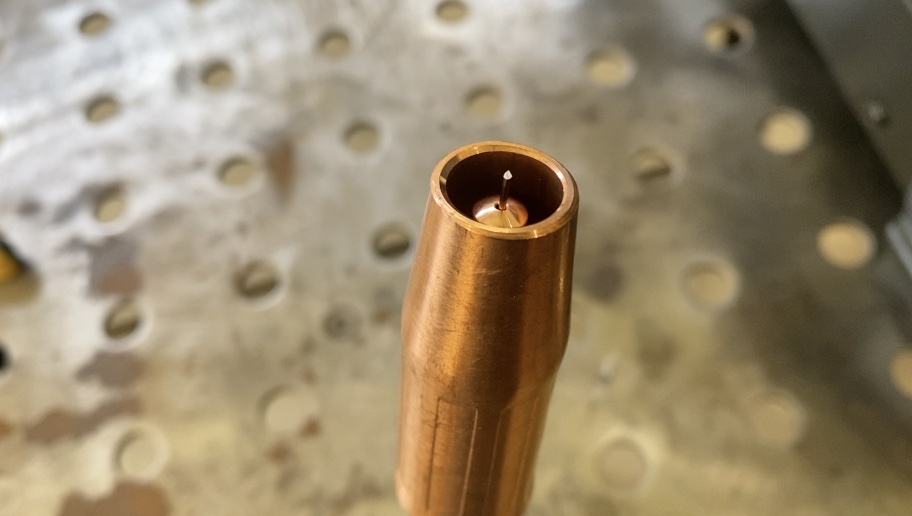
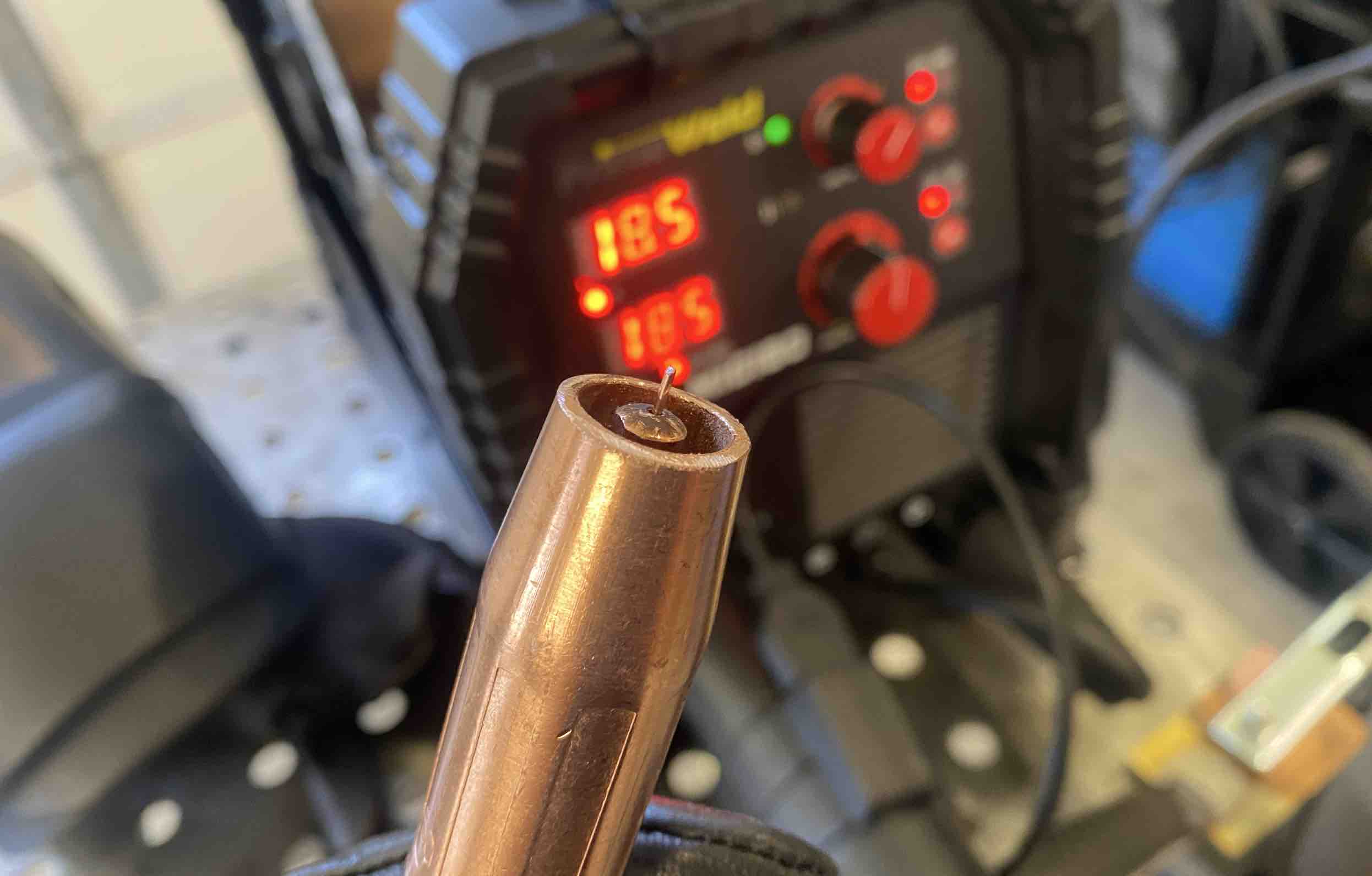
Did you know that when you use a longer stick out, your amperage actually drops?
Thats why I prefer to use a short stick out with short circuit mig welding. I notice less spatter, a crisper arc, and the puddle is noticeably hotter.
Some contact tip and nozzle setups have the contact tip recessed a bit more than I like for short circuit mig welding.
A recessed tip works great for spray transfer mig, but I'm not going to be doing any spray with this welder.
I prefer the tip to be flush for short circuit mig so I trimmed about 1/8" off with a grinder.
What weld defect is most common with short circuit MIG?
What weld defect is most common with short circuit MIG?
The most commonly seen weld defect with short circuit mig is lack of fusion. Especially when mill scale coatings are not removed prior to welding or when welding downhill.
What is the difference between short circuit and spray welding?
What is the difference between short circuit and spray welding?
The term “short circuit” is just a mode of metal transfer where the wire short circuits into the molten puddle.
This happens somewhere around 90-200 times per second depending on settings used.
Spray transfer is where much higher settings are used along with a different gas to achieve a very hot arc where instead of the wire short circuiting to melt into the puddle, fine droplets of molten metal spray into the puddle.
What are the 3 types of MIG welding?
What are the 3 types of MIG welding?
- Short circuit - where comparatively low currents are used along with c25 gas or pure Co2.
- Spray (including pulsed spray) where argon rich gases like 90/10 ar/Co2 are used
- Globular transfer where C25 gas is used along with higher currents whether intentional or on accident.


